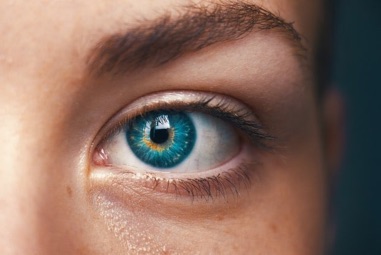Sore irritable eyeballs

IMPORTANT The information provided is of a general nature and should not be used as a substitute for professional advice. If you think you may suffer from an allergic or other disease that requires attention, you should discuss it with your family doctor. The content of the information articles and all illustrations on this website remains the intellectual property of Dr Raymond Mullins and cannot be reproduced without written permission.
Introduction
There are a number of causes of irritable eyeballs, although sometimes it is hard to distinguish eyeball irritation from skin irritation. In addition, it is possible to have more than one condition affecting the eyes in the same person at the same time. If so, that means that more than one treatment might be needed. This list of causes of irritable eyes is not exhaustive but it is not that uncommon for people with irritable eyeballs to assume wrongly that allergy is the cause. If allergy medication doesn't work, then either the person is not allergic at all, has severe allergy or has more than one problem affecting the eyeball. If the diagnosis is uncertain, seeing an eye specialist as well as an allergy specialist may be needed.
Dry eyes
Dry eyes will cause potentially sore, dry and gritty eyeballs. They will be worse in winter time, dry climates, in air-conditioned atmospheres and with computer use since one tends to blink less often when staring at computer screens than when talking to people. Some medications will dry out the eyes as well, such as antihistamines or some older antidepressants. Another condition called Sjogren's syndrome causes dry eyes and mouth due to inflammation of the glands that produce secretions. If the eyes are dry, then lubricant eyedrops like Polytears, Biontears, Systane Viscotears can all help, but they need to be applied every few hours. If the eyes are dry, then anti-allergy drops are no more effective than lubricant drops.
Allergic conjunctivitis
This is common and usually occurs with hay fever, so that people get itchy, watery pink eyes as well of blocked nose, runny nose and sneezing attacks. While lubricant eyedrops can help, generally anti-allergy drops are much more effective such as Zyrtec drops, Naphcon A eyedrops, Zatiden or Patanol. Apart from medication, avoiding allergic triggers or immunotherapy to switch off allergy can be useful. See our article on hay fever and immunotherapy.
Vernal conjunctivitis
This is like “super allergic conjunctivitis”. Symptoms are those of red itchy gritty eyes and often sometimes red eyeballs and thick discharge. Exposure to water like swimming often make symptoms worse. Underneath the eyelid, one can sometimes see collections of white cells with an appearance that looks like a cobblestone street. Allergy testing is not always positive and vernal conjunctivitis does not always respond that will to routine anti-allergy treatment. Often, anti-inflammatory eyedrops such as cyclosporine or steroid eyedrops are required to control symptoms. This potent drops like cromoglycate can sometimes help. It is not that clear whether immunotherapy helps vernal conjunctivitis.
Conjunctivitis medicamentosa
This is the eyeball equivalent of rhinitis medicamentosa. If a person has red eyes, there is a temptation to use eyedrops that contain medicines that make blood vessels contract to make the eyeballs look better and white. Examples include devising eyedrops, but also anti-allergy drops like Naphcon-A contain an antihistamine plus a blood vessel contracting drug. If these are used all the time, then the blood vessels in the eyeball can become dependent on the eyedrops and the eyes become permanently red and irritated. The condition is reversible – one has to stop the eyedrops and usually after a few weeks everything is back to normal.
Infectious Conjunctivitis
This can trigger red sore eyes with watery or yellow discharge and can be secondary to viral or bacterial infection. Treatment is with topical antibiotics, but if symptoms are ongoing, the possibility of another cause should be considered. Of course if one has irritable eyeballs, one is more tempted to touch the eyes and spread infection. So the infection can sometimes be secondary.
Pterygium
This is an overgrowth of the conjunctiva which can grow from the edge of the eye across the window auctioneer of the eye. Sometimes redness is seen and sometimes irritation. The major trigger is exposure to UV light. Surgery to remove the overgrowth is sometimes needed.
Blepharitis
This is an inflammatory condition of the glands producing secretions in the conjunctiva. The end result is red gritty sore eyes, sometimes with sticky eyes in the morning. Anti-allergy drops are no better than lubricant drops. The treatment is one or more of lid scrubs, hot compresses and sometimes specific medication. This can occur on its own or with rashes cause seborrhoeic dermatitis which occur around the size of the nose, eyebrows and hairline and behind the ears and often associated with dandruff.
Rosacea keratitis
Rosacea is a condition of the skin, most common in those of northern European descent where one gets flushing, pimples years after one should have grown after acne and sometimes sore red gritty eyes.
Contact allergic dermatitis
Contact allergic dermatitis causes eczema -like rashes involving the eye skin. There are many many potential causes and if the eyelid margin is affected, the eyeballs as well as the eye skin will feel irritated. Sometimes, however, the eyeball is affected, for example, a person having contact allergy to preservatives and eyedrops that they are using for treating allergic conjunctivitis, or a person allergic to cosmetics applied around the eye. Patch testing can be undertaken in an attempt to identify avoidable triggers.
Last reviewed 3 July 2020
